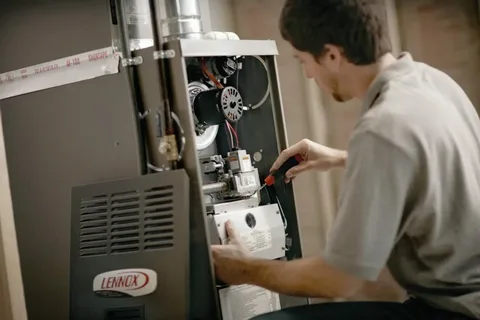Is It Cheaper to Repair or Replace an Old Furnace?

When a furnace begins to show signs of age, homeowners often face a tough decision: should they repair the system or replace it entirely? While repairs may seem like the cheaper choice at the moment, replacement can sometimes deliver better long-term value. The key is knowing your furnace’s age, condition, and efficiency before making a decision.
The Case for Repairing Your Furnace
If your furnace is relatively new or experiencing only minor issues, repairing it often makes the most sense. Instead of rushing into the cost of a full replacement, small fixes can usually restore the system to proper working order without a huge investment. Many common furnace problems, like a faulty thermostat, a dirty filter, or a worn ignitor, can be fixed quickly by a professional technician.
These types of repairs are affordable, less disruptive, and can add years of life to your unit when paired with regular service. For homeowners who have kept up with maintenance and own a system under 10 years old, repair is often the smarter and more cost-effective choice. Repairs are a practical option when:
- The furnace is less than 10 years old
- Issues involve small components like thermostats, filters, or ignitors
- The cost of repair is less than half the price of replacement
- You’ve kept up with furnace maintenance
Signs It May Be Time for a Replacement
While repairs can extend the life of a furnace, there comes a point where replacement is the smarter choice. Aging systems demand frequent repairs, consume more energy, and may not heat your home effectively. For more details, check out our full guide on how to tell when to replace your furnace.
Replacement may be the better option if you notice:
- Frequent repairs that keep adding up
- Rising energy bills despite regular tune-ups
- Uneven heating or cold rooms
- Unusual noises such as banging or rattling
- A furnace that’s 15–20 years old or older
Weighing the Costs
Repair costs vary depending on the part and labor, but some components are much more expensive to replace. As furnaces age, high-cost repairs can quickly exceed the system’s value.
Repairs that can be cost-effective include:
- Thermostat replacement
- Blower motor adjustments
- Ignitor or flame sensor replacement
- Air filter changes
Repairs that often indicate it’s time for replacement include:
- Heat exchanger replacement
- Major blower motor failure
- Repeated electrical issues
- Multiple breakdowns in a short time
Benefits of a New Furnace
Although replacement comes with a higher upfront cost, modern furnaces deliver significant advantages that can make the investment worthwhile. Unlike older systems that often struggle with efficiency and reliability, today’s furnaces are engineered to perform better in every way. By upgrading, you’re not just getting a new heating unit, you’re improving your home’s comfort, cutting down on operating costs, and gaining long-term peace of mind.
One of the biggest advantages is efficiency. Modern furnaces are built with high Annual Fuel Utilization Efficiency (AFUE) ratings, meaning they convert more of the fuel they use directly into heat for your home. This results in lower monthly bills and less wasted energy, which is a win for both your budget and the environment.
Comfort is another major factor. Older units may leave certain rooms too hot while others remain cold. New furnaces are designed to distribute heat more evenly, keeping your entire home at a consistent temperature. Families especially notice the difference during harsh Canadian winters when reliable, steady heat is most important.
Warranties also make replacement appealing. A brand-new furnace comes backed by manufacturer coverage, protecting you from unexpected repair costs. Knowing that your investment is supported for years gives you confidence and reduces stress about sudden breakdowns.
Noise reduction is another benefit. If you’ve lived with an older furnace, you may be used to the loud banging or rattling sounds when it turns on. Modern models operate with advanced blower technology that makes them significantly quieter, blending into the background of your daily life.
And finally, technology has advanced in a way that gives you more control over your home’s comfort. Many new furnaces are compatible with smart thermostats, allowing you to adjust settings remotely, program heating schedules, and even monitor energy use in real time. This combination of efficiency and convenience makes modern systems not just heaters, but smart investments in the future of your home.
The main benefits include:
- Lower monthly heating bills through higher efficiency ratings
- Consistent comfort with fewer hot and cold spots
- Peace of mind with manufacturer warranties
- Quieter operation compared to older models
- Modern features such as smart thermostat compatibility
Maintenance Can Extend Furnace Life
Even with older systems, consistent maintenance can reduce the need for repairs and delay replacement. Regular service keeps the furnace running efficiently, identifies small issues early, and helps improve comfort. Investing in scheduled furnace maintenance helps maximize the system’s lifespan and avoid costly surprises.
